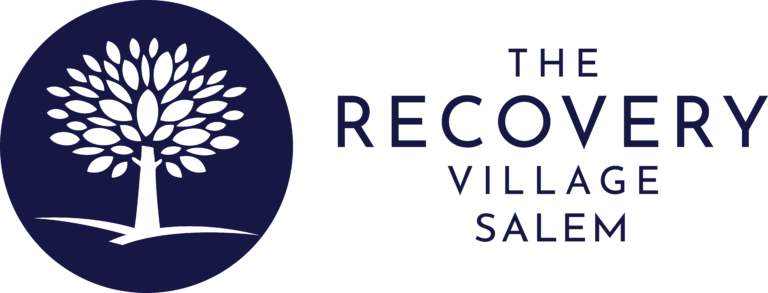The Liver’s Remarkable Ability to Heal
Your liver is the only organ in your body capable of complete regeneration. Unlike other organs that form scar tissue when damaged, the liver can replace damaged cells with new, healthy tissue. Research from the National Library of Medicine shows that as little as 25% of original liver mass can regenerate back to full size when alcohol is removed from the equation.
Understanding the signs of liver healing can provide crucial motivation during recovery and help you recognize the positive changes occurring in your body as you maintain sobriety.
How Alcohol Damages the Liver
Alcohol-related liver disease progresses through distinct stages, each with different potential for recovery:
Alcoholic Fatty Liver Disease
The earliest stage occurs when fat accumulates in liver cells due to alcohol consumption. This condition is completely reversible with sustained abstinence and typically shows no symptoms initially.
Ready to Break Free From Addiction?
If you’re seeking help for yourself or a loved one, our expert team is here to guide you every step of the way. Don’t wait—start your journey to recovery today.
Alcoholic Hepatitis
Inflammation develops in the liver tissue, potentially causing symptoms like fatigue, abdominal pain, and jaundice. Mild alcoholic hepatitis is usually reversible with permanent abstinence, though severe cases can be life-threatening.
Cirrhosis
Advanced scarring replaces healthy liver tissue. While cirrhosis is generally not reversible, stopping alcohol immediately can prevent further damage and significantly increase life expectancy.
Timeline for Liver Healing
First 24-48 Hours
Once you stop drinking, the strain on your liver begins to decrease immediately. Your liver no longer needs to process alcohol as a toxin, allowing it to focus on other essential functions like blood sugar regulation and protein synthesis.
First Week
Healing processes begin within days of your last drink. Inflammation starts to decrease, and liver cells begin the regeneration process. You may notice improved energy levels as your liver becomes more efficient at maintaining blood sugar balance.
2-4 Weeks
Research indicates that fatty liver disease can show significant improvement within this timeframe. Many people experience noticeable increases in energy and improvements in sleep quality as liver function normalizes.
1-3 Months
Studies published in Scientific Reports demonstrate that even after significant alcohol-related damage, the liver can show remarkable recovery within this period. Blood tests often reveal improving liver enzyme levels and better overall function.
6-12 Months
For more severe damage, this extended period allows for substantial healing. However, the extent of recovery depends on factors like the duration of alcohol use, overall health, and adherence to healthy lifestyle practices.
Physical Signs Your Liver Is Healing
Improved Energy and Metabolism
As your liver heals, it becomes more efficient at converting nutrients into energy and maintaining stable blood sugar levels. You’ll likely notice:
- Increased stamina throughout the day
- More stable energy without afternoon crashes
- Improved ability to concentrate and focus
- Better physical endurance during activities
Better Digestive Function
Liver healing directly impacts your digestive system’s ability to process fats and absorb nutrients:
- Reduced bloating and abdominal discomfort
- Improved appetite with normal hunger cues
- Less frequent nausea and digestive upset
- Better tolerance for fatty or rich foods
- Regular, healthy bowel movements
Enhanced Immune Function
A healthy liver plays a crucial role in immune system regulation. As healing progresses, you may experience:
- Fewer infections and illnesses
- Faster recovery from minor ailments
- Improved wound healing
- Better resistance to seasonal viruses
Improved Blood Clotting
Alcohol impairs the liver’s production of blood platelets and clotting factors. Signs of improvement include:
- Normal clotting after minor cuts or injuries
- Reduced tendency to bruise easily
- Fewer unexplained nosebleeds
- Normal healing of minor wounds
Laboratory Signs of Liver Healing
Liver Function Tests
Your healthcare provider can monitor liver healing through blood tests that measure:
Alanine Aminotransferase (ALT) and Aspartate Aminotransferase (AST) These enzymes decrease as liver inflammation resolves. Normal levels indicate healthy liver cell function.
Bilirubin Levels Elevated bilirubin causes jaundice (yellowing of skin and eyes). Decreasing levels indicate improved liver processing of waste products.
Albumin Production Rising albumin levels demonstrate that your liver is producing adequate amounts of this essential protein for maintaining fluid balance and nutrition transport.
Alkaline Phosphatase Normalizing levels suggest improved bile duct function and overall liver health.
Improved Amino Acid Regulation
As liver function improves, your body becomes better at processing proteins and regulating amino acids that cannot be stored. While this initially may cause temporary digestive adjustments, it ultimately leads to better protein utilization and muscle health.
External Signs of Recovery
Skin and Appearance Changes
- Reduction or elimination of jaundice (yellow skin and eyes)
- Improved skin tone and complexion
- Less facial puffiness and swelling
- Healthier-looking hair and nails
- Reduced appearance of spider veins
Mental Clarity
Alcohol-related “brain fog” often improves as liver function normalizes:
- Sharper thinking and decision-making
- Better memory and recall
- Improved mood stability
- Enhanced ability to handle stress
- Clearer communication skills
Factors That Influence Healing Speed
Duration and Severity of Alcohol Use
The extent of previous liver damage significantly impacts recovery time. Generally:
- Recent or mild damage heals more quickly
- Long-term, heavy use requires longer recovery periods
- Advanced cirrhosis may have limited healing potential
Overall Health Status
Your body’s ability to heal depends on multiple factors:
- Age and general physical condition
- Nutritional status and diet quality
- Presence of other medical conditions
- Medication use and interactions
Lifestyle Factors
Certain practices can accelerate liver healing:
- Complete abstinence from alcohol
- Balanced, nutrient-rich diet
- Regular, moderate exercise
- Adequate sleep and stress management
- Avoiding hepatotoxic medications when possible
Supporting Your Liver’s Recovery
Nutritional Support
Liver-Friendly Foods
- Lean proteins for tissue repair
- Antioxidant-rich fruits and vegetables
- Whole grains for stable energy
- Healthy fats like omega-3 fatty acids
Foods to Limit
- Processed foods high in sodium
- Excessive sugar and refined carbohydrates
- Saturated and trans fats
- Any remaining alcohol
Hydration
Proper hydration supports liver function and helps flush toxins from your system. Aim for 8-10 glasses of water daily, adjusting for activity level and climate.
Medical Monitoring
Regular follow-up with healthcare providers ensures proper healing and identifies any complications early. This is particularly important for individuals with severe liver damage.
When to Seek Medical Attention
Contact your healthcare provider if you experience:
- Persistent or worsening abdominal pain
- Yellowing of skin or eyes that doesn’t improve
- Swelling in legs, feet, or abdomen
- Confusion or personality changes
- Vomiting blood or dark, tarry stools
- Extreme fatigue that doesn’t improve with rest
Professional Support for Liver Recovery
Medical Detoxification
At Recovery Salem, our medical detox program provides 24/7 monitoring during the critical early stages when liver healing begins. Medical supervision ensures safe withdrawal management while monitoring for complications.
Comprehensive Treatment
Our inpatient rehabilitation program addresses both addiction and physical health complications. Nutritional counseling, medical management, and holistic therapies support optimal liver recovery.
Insurance Coverage
Most insurance plans cover addiction treatment, including medical care for alcohol-related health complications. Our team can verify your benefits and explain coverage options.
The Importance of Sustained Sobriety
Liver healing requires complete abstinence from alcohol. Even small amounts of alcohol can be toxic to a healing liver, particularly in cases of severe damage or cirrhosis. Research consistently shows that continued drinking, even in reduced amounts, prevents optimal healing and increases the risk of progression to end-stage liver disease.
For individuals with advanced liver damage, lifelong abstinence is essential. A single drink can be toxic to a liver that has experienced significant alcohol-related injury.
Long-Term Benefits of Liver Recovery
Successful liver healing through sustained sobriety provides numerous benefits:
- Reduced risk of liver cancer and other complications
- Improved overall energy and quality of life
- Better immune system function
- Enhanced ability to process medications safely
- Decreased risk of cardiovascular disease
- Improved mental clarity and emotional stability
Getting Professional Help
Recognizing signs of liver healing can provide powerful motivation for maintaining sobriety, but achieving lasting recovery often requires professional support. Alcohol use disorder is a complex medical condition that benefits from comprehensive treatment.
Recovery Salem offers evidence-based programs designed to help individuals achieve sustained sobriety while supporting physical healing. Our medical team specializes in managing alcohol-related health complications during recovery.
If you’re ready to give your liver the chance to heal, contact our admissions team today. We can assess your situation, explain treatment options, and help you begin the journey toward physical and emotional recovery.
Remember that liver healing is possible, but it requires commitment to complete sobriety. With proper support and treatment, your liver’s remarkable regenerative abilities can help restore your health and improve your quality of life.


